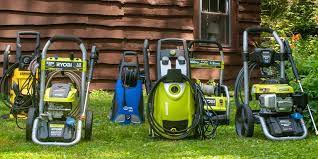A pressure washer is not a very complex machine. In reality, it is just a water siphon fueled by an electric engine. The washer takes in normal water from a spigot, the siphon speeds up the water to high pressure. And afterward spurts it from a hose at speed through a trigger firearm.
You can fit different connections to the furthest limit of the hose for cleaning various things. These, then, at that point, are the fundamental parts you'll find inside any pressure washer design:
A hose that associates the strain washer to the main water supply. There's typically a channel in the Gulf to stop soil and garbage from entering the washer and clogging the engines. Small amounts of coarseness are the last thing you need inside your washer-particularly since they could come out of the opposite end at rapid speed!
Electric engine or gas motor
Generally, more modest pressure washers run off the electric power supply, yet greater models are controlled by conservative fuel motors. The motors are like the ones you'd find in lawnmowers (commonly power appraised at around 3-4kW or 3.5-5.5HP).
Gas motor models are incredible assuming you're working outside where a power supply is difficult to come by (or where a long following wire would be hazardous or badly designed). The engine or motor is intended to drive the water siphon.
Water siphon
This is the core of a pressure washer. It's a bit like a hand-worked ground-water siphon just it's driven at high velocity by the electric engine (or gas motor) rather than your hand. Whenever the motor pulls the siphon one way, it sucks water in from the spigot; when it pushes the siphon the alternate way, the water spurts out in a high-pressure stream. Siphons are intended to deal with a water stream of around 4-8 liters (1-2 gallons) each moment.
High-pressure hose
This is the cylinder that runs out from the washer to anything cleaning connection you've chosen to utilize. A standard piece of tubing wouldn't have the option to endure the high strain of the water moving through it. High-pressure hoses are built up with a wired network. They also have at least two layers of high-thickness plastic.
It's critical to utilize a hose that has a higher tension rating than the siphon in your pressure washer. However, assuming your washer accompanied your hose, there shouldn't be anything to stress over.
Ordinarily, the security edge on pressure-washer hoses is around 300%. The hose must have the ability to endure at least 6000 PSI if your pressure washer is appraised at 2000 psi. If it has less, it will be susceptible to breaking apart.
Cleaning connection
Contingent upon what you're cleaning, you can change from a basic trigger weapon (basically a valve that lets water through just when you crush the handle) to a turning wand splash or a pivoting brush to scour your drive. The power of the water moving through them is what fueled connections are driven by.


